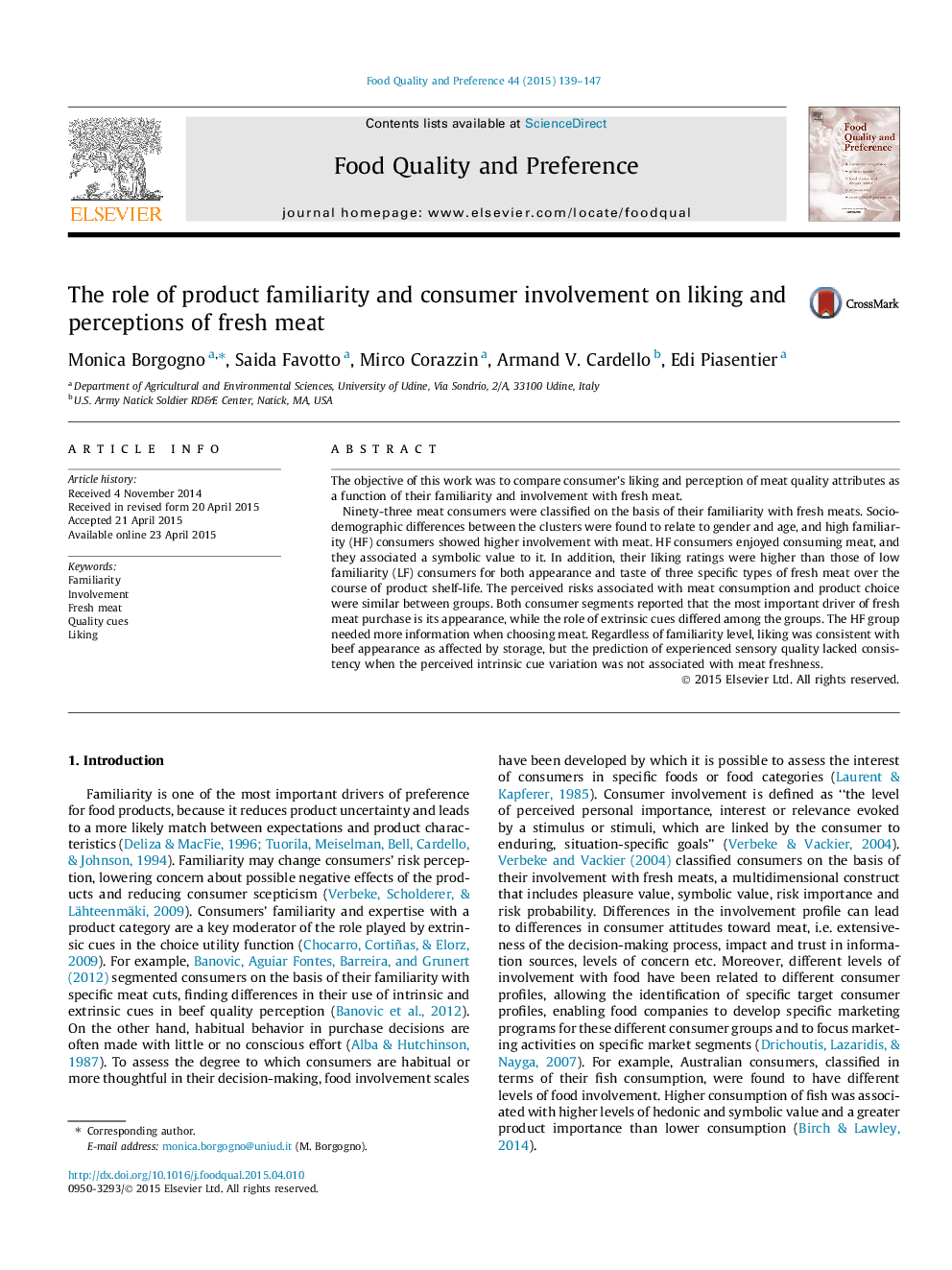| Article ID | Journal | Published Year | Pages | File Type |
|---|---|---|---|---|
| 6261362 | Food Quality and Preference | 2015 | 9 Pages |
â¢Two consumer segments were identified according to familiarity with fresh meat.â¢The high familiarity cluster had higher pleasure and symbolic involvement in meat.â¢The two clusters used different external cues to control for risk.â¢Loss of freshness in meat was perceived after three days of storage in both groups.â¢Meat liking was found to be directly related to storage changes in beef appearance.
The objective of this work was to compare consumer's liking and perception of meat quality attributes as a function of their familiarity and involvement with fresh meat.Ninety-three meat consumers were classified on the basis of their familiarity with fresh meats. Socio-demographic differences between the clusters were found to relate to gender and age, and high familiarity (HF) consumers showed higher involvement with meat. HF consumers enjoyed consuming meat, and they associated a symbolic value to it. In addition, their liking ratings were higher than those of low familiarity (LF) consumers for both appearance and taste of three specific types of fresh meat over the course of product shelf-life. The perceived risks associated with meat consumption and product choice were similar between groups. Both consumer segments reported that the most important driver of fresh meat purchase is its appearance, while the role of extrinsic cues differed among the groups. The HF group needed more information when choosing meat. Regardless of familiarity level, liking was consistent with beef appearance as affected by storage, but the prediction of experienced sensory quality lacked consistency when the perceived intrinsic cue variation was not associated with meat freshness.
